Mexico Macabre: four horror classics from Indicator
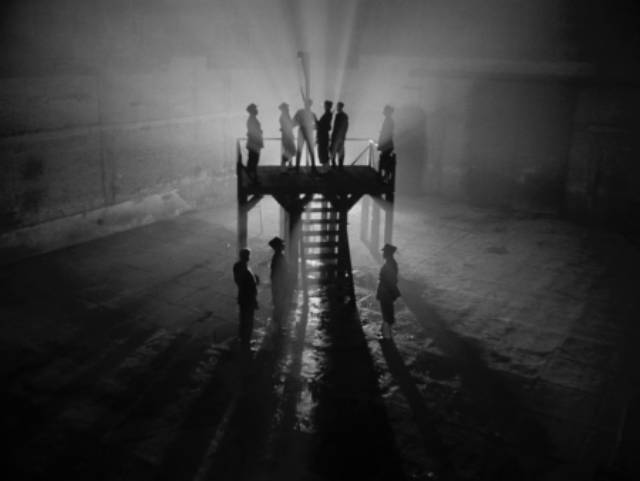
I didn’t have much experience with, or opinion about, Mexican cinema until almost two decades ago. What impression I did have was of kitschy masked wrestlers and Aztec mummies and robots, the latter confirmed in 2006 when I bought BCI’s three-disk DVD set of a trilogy of Aztec Mummy movies directed by Rafael Portillo, which combined elements of Universal’s original The Mummy (1933) with elements derived from old Republic serials, blended together with local cultural flavours which gave them an engagingly exotic quality. But what really caught my attention – via an illicit copy from a friend with whom I regularly exchanged ripped DVDs back then – was Chano Urueta’s The Brainiac (1962), a movie of such bizarre invention that it seemed to open a door into a whole new chamber of cinema history.
Urueta’s movie received an official release from the short-lived CasaNegra label in 2006 and I immediately picked it up, along with the company’s other releases – Urueta’s The Witch’s Mirror (1962), Rafael Baledón’s The Man and the Monster (1958) and The Curse of the Crying Woman (1963), and Fernando Méndez’s The Vampire (1957), The Vampire’s Coffin (1958), The Black Pit of Dr. M and The Living Coffin (both 1959). Though this selection was uneven, I was hooked, and then almost immediately disappointed when CasaNegra disappeared as quickly as it had arrived. My interest lay dormant until the past couple of years when Criterion included Juan Bustillo Oro’s Dos Monjes (1934) in their third World Cinema Project set in 2020 and Indicator released two Mexican horror movies from the early ’30s in 2022. These three films provided a glimpse of the roots of the movies from the ’50s and ’60s in a distinctively Mexican fusion of Hollywood horror and European expressionism.
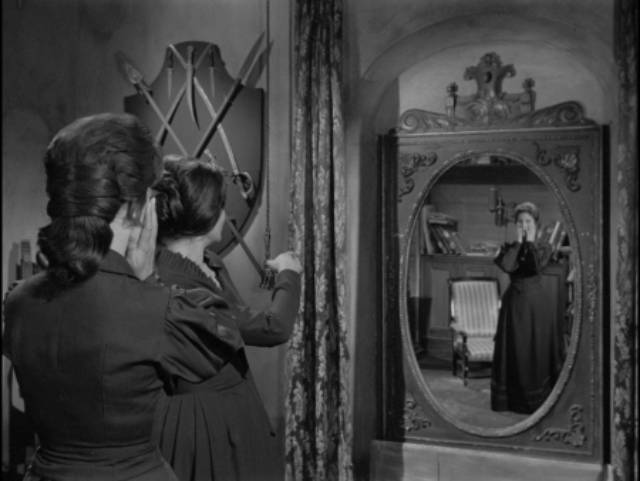
Now Indicator have released a box set of four of these movies under the title Mexico Macabre: Four Sinister Tales from the Alameda Films Vault 1959-1963 and not surprisingly the new hi-def presentations serve them well. The atmospheric black-and-white imagery hearkens back to those roots in the early sound era, even if the immediate impetus for their production was the resurgence of Gothic horror following the international success of Hammer’s The Curse of Frankenstein in 1957.
Actor-producer Abel Salazar seems to have initiated this Mexican Gothic revival, having produced and co-starred in The Vampire. Among his many other credits, he produced three of the movies in the set, and co-stars in two of them. These movies were all shot at Estudios Churubusco in Mexico City and it’s clear that even back then the level of craft I saw during the production of Dune at the studio in 1983 was characteristic of the Mexican industry. All of them are beautifully designed, with elaborate and detailed sets – both interiors and studio exteriors such as roads passing through haunted forests – and shot in richly layered black-and-white which gives them all an atmosphere steeped in Gothic menace.
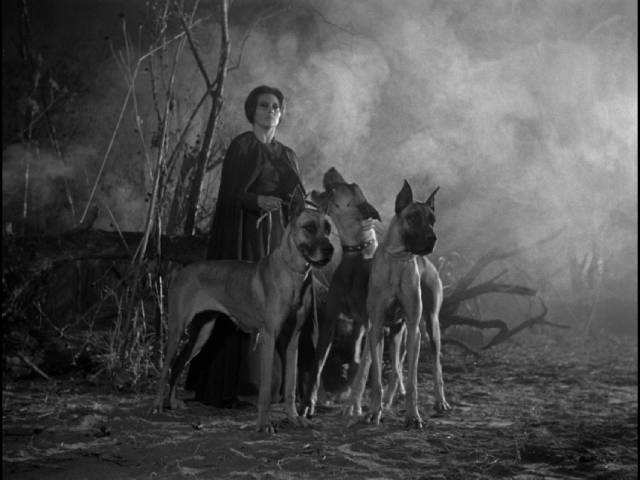
The Curse of the Crying Woman (Rafael Baledón, 1963)
Of the four films in the set, Rafael Baledón’s The Curse of the Crying Woman most obviously draws on specific Mexican narrative tropes, referring to La llorona, the folk legend rooted in colonial crimes perpetrated against indigenous people. But the film veers away from the specific story of a wronged woman whose grief for her dead children transcends death and leads those who wronged her to their doom. In Baledón’s movie, co-written with Fernando Galiana, the story revolves around a more generalized concept of female power in conflict with patriarchy. Amelia (Rosita Arenas) and her husband Jaime (Salazar) travel to the remote home of her aunt Selma (Rita Macedo), where Amelia had lived as a child. What Amelia doesn’t know is that she is descended from the original La llorona, who was executed long ago and whom Selma intends to resurrect through a ceremony which requires not just Amelia’s participation, but her body and spirit as a vessel.
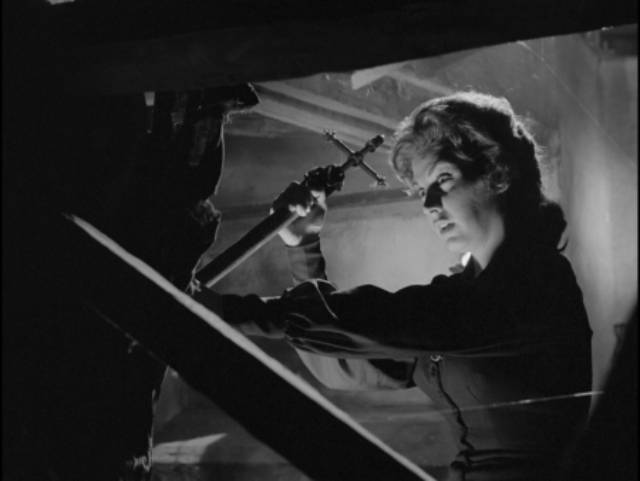
Selma herself straddles this world and the supernatural; in the pre-credits sequence we see her destroying a group of travellers passing through the woods near her home with the help of her lumbering servant Juan (Carlos López Moctezuma). The imagery explicitly references Mario Bava’s Black Sunday (1960), with Selma first seen dressed in black with three large dogs, echoing Barbara Steele as the resurrected Princess Asa. This sequence has a cold-blooded cruelty which colours everything which follows, but it doesn’t simply establish Selma as a dangerous monster who needs to be suppressed. The film’s male characters are depicted as weak and no match for female power and anger and Amelia is faced with the moral choice of either submitting to and perpetuating that power or resisting and forging an alternative path.
While The Curse of the Crying Woman is full of striking imagery – Selma’s soulless black eyes when she manifests the ancient occult power, the cellar in which the decaying body of the original La llorona is impaled with a spear – there’s a static quality to the camerawork and editing which makes it (for me) the least satisfying movie in the set.
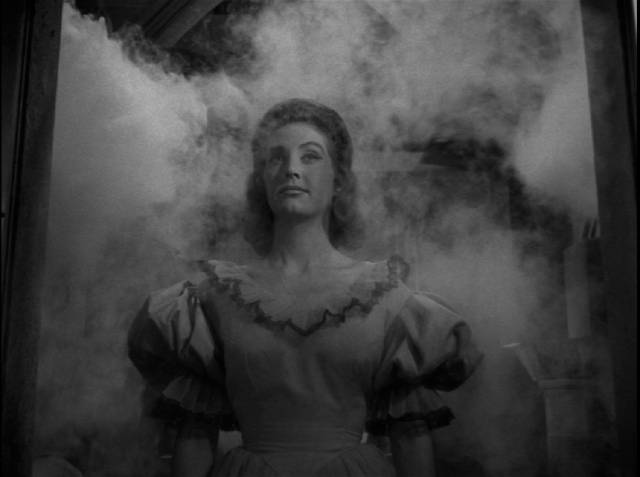
The Witch’s Mirror (Chano Urueta, 1962)
Chano Urueta’s The Witch’s Mirror also deals in the irresolvable conflict between the patriarchy and female power, seeming in the brief prologue to lean in favour of the former. Over a montage of old woodcuts and illustrations, a narrator tells us that witches are very real and allied with the Devil, a threat to society. But the story which follows shows us male duplicity and violence and justified female resistance.
Elena (Dina de Marco) is married to Eduardo Ramos (Armando Calvo), whose housekeeper Sara (Isabela Corona) is Elena’s godmother. She’s also a witch, and in the opening scene she shows Elena a vision in a full-length mirror which warns that Eduardo has plans to kill his wife. Sara pleads with her master Satan to spare her godchild, but the Devil just shrugs and before you know it Elena has been poisoned. And Eduardo moves his girlfriend and intended second wife Deborah (Rosita Arenas) into the house. Deborah finds the house unsettling as everything seems to remind Eduardo of his dead wife. This problem is aggravated when Sara summons Elena’s spirit from the grave, and the unquiet ghost appears to Deborah in the big mirror.
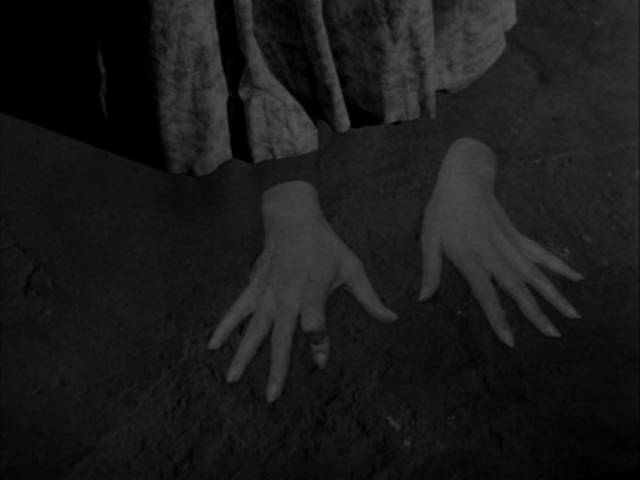
Eduardo makes a fateful mistake when he throws a lamp at the mirror and the flaming oil sets Deborah on fire, horribly burning her face and hands. A doctor, he sets about trying to repair the damage, echoing the work of Dr. Génessier (Pierre Brasseur) in Georges Franju’s Eyes Without a Face, which had been released a couple of years earlier. Like Génessier’s daughter Christiane (Edith Scob), Deborah wanders around the house with her head wrapped in bandages between her husband’s attempts to replace her ruined skin with grafts from dead women. When he replaces her burned hands with fresh ones taken from a living victim, Elena takes possession of them and they seemingly act with a will of their own for a nod to Robert Florey’s The Beast with Five Fingers (1946). While Eduardo is ultimately punished for his crimes, the cost to the women he has victimized is terribly high.
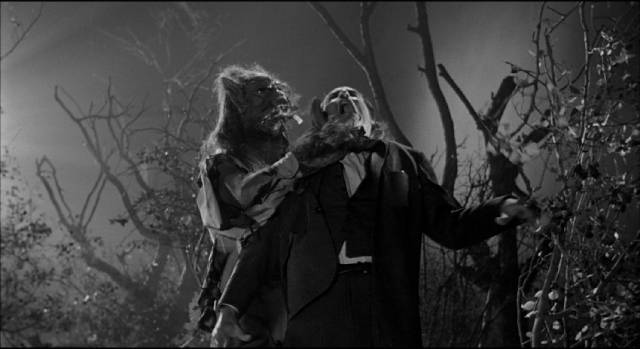
The Brainiac (Chano Urueta, 1962)
The return of something malevolent from the past seeking revenge on the present is a common theme in horror – The Curse of the Crying Woman, Black Sunday, Ulli Lommel’s The Devonsville Terror, Bill Rebane’s The Demons of Ludlow… In many, if not most, of these stories the menace is someone who was condemned by a dominant authority for his or her transgressions and executed, often in gruesome ways. But few of these are as batshit crazy as Chano Urueta’s The Brainiac (whose original title is the less absurd El barón del terror).
In a protracted prologue set in 1661, hooded figures of the Inquisition give a lengthy account of the heretical acts of occultist and alchemist Baron Vitelius d’Estera (Abel Salazar), who listens with a derisive grin to every charge and seems to welcome the sentence passed down by his accusers – death at the stake. As the fires begin to consume him, the Baron swears he’ll return in three-hundred years to exact revenge on the Inquisitors’ descendants, putting an end to all their family lines. As he speaks, a comet unexpectedly crosses the sky and he’s apparently carried away.
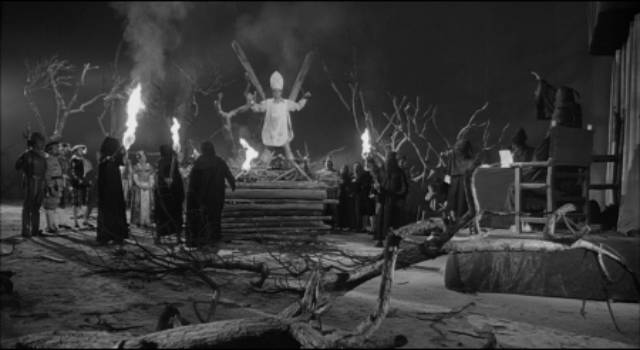
Exactly three-hundred years later, astronomer Professor Saturnino Millán (Luis Aragón) has calculated that an unknown comet is due to pass the Earth. Although it flashes into sight, it just as quickly disappears, apparently having crashed somewhere nearby. The professor’s assistants Reynaldo (Rubén Rojo) and Victoria (Rosa María Gallardo) drive off to look for it and encounter a handsome man in the woods, little realizing that he has just arrived as a monster which sucked the brains out of a man, taking on his physical appearance (and clothes).
As the Baron hunts down the various descendants, he appears in public as the elegant nobleman only to revert to his bizarre alien form when he moves in for the kill, occasionally pausing to unlock a chest in which he keeps a bowl full of human brains which he dips into with a spoon for sustenance. With Reynaldo and Victoria his final targets, it’s a race against time to defeat the vengeful monster.
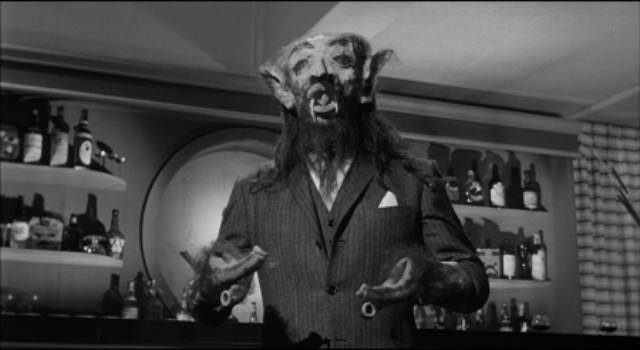
In outline, The Brainiac sounds like a fairly routine ’50s-style sci-fi/horror movie. What sets it apart is the execution, and that might be interpreted in two diametrically opposed ways. Is it cheap and amateurish, or is Urueta deliberately playing with form? An uncharitable reading might see the design and effects as silly and incompetent; but a more sympathetic view could interpret the film as delightfully playful, its effects recalling those of early silent cinema, and the design of the monster as a deliberately outrageous commentary on genre conventions. (Was Urueta doing a Guy Maddin-esque pastiche decades before Maddin ever picked up a camera?) Or perhaps it falls somewhere between these two poles. Either way, the movie is enormously entertaining and the monster itself is as endearing as the giant bird-creature of Fred Sears’ The Giant Claw (1957). Whatever Urueta’s actual intentions might have been, The Brainiac gives me an inordinate amount of pleasure every time I watch it.
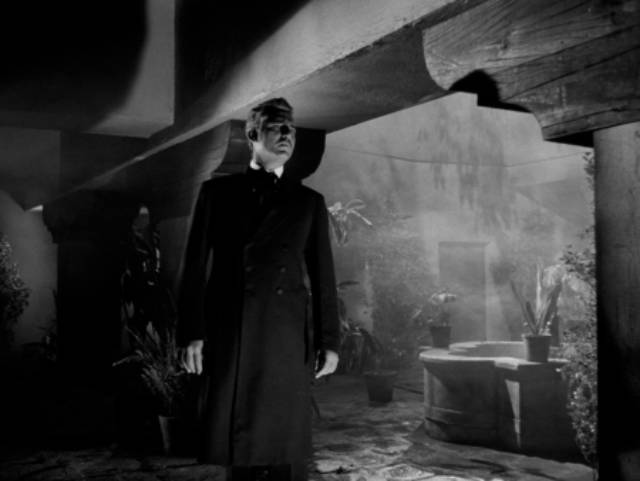
The Black Pit of Dr. M (Fernando Méndez, 1959)
But the finest film in the Indicator set is Fernando Méndez’s The Black Pit of Dr. M, which can in no way be considered “playful” like The Brainiac. At a clinic for the insane, Dr. Mazali (Rafael Bertrand) and his colleague Dr. Aldama (Antonio Raxel) make a pact – whichever dies first will find a way to bring the other into the afterlife so he can return with knowledge of what happens after death. Aldama dies and, during a seance, tells Mazali that he can actually cross over but the price will be terribly high.
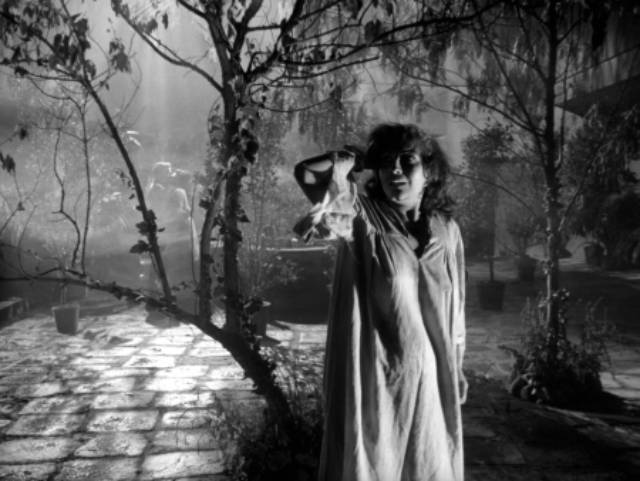
What follows is an intricate narrative with multiple interlocking parts which trap Dr. M in an inescapable fate which gives him the knowledge he sought but destroys him in the process. The script by Ramón Obón, who had co-written The Vampire and The Vampire’s Coffin, is structured with the inexorable, inescapable logic of a nightmare, realized flawlessly by Méndez and prolific cinematographer Victor Herrera (it was the third of twelve movies shot by the latter that year alone). The film’s atmosphere is reminiscent of Poe’s 1845 story The Facts in the Case of M. Valdemar and its unwholesome obsession with learning prematurely what lies beyond death. It’s similar in tone to Peter Newbrook’s The Asphyx (1972) and Pupi Avati’s Zeder (1983), but may be better than both.
I won’t say anything more about the plot because this is a film which deserves to be discovered fresh by new viewers. I will just say that it’s a masterpiece of Gothic horror which ranks with the best of Bava and Hammer and is better than most of what came out of the Gothic resurgence of the late ’50s and ’60s.
*
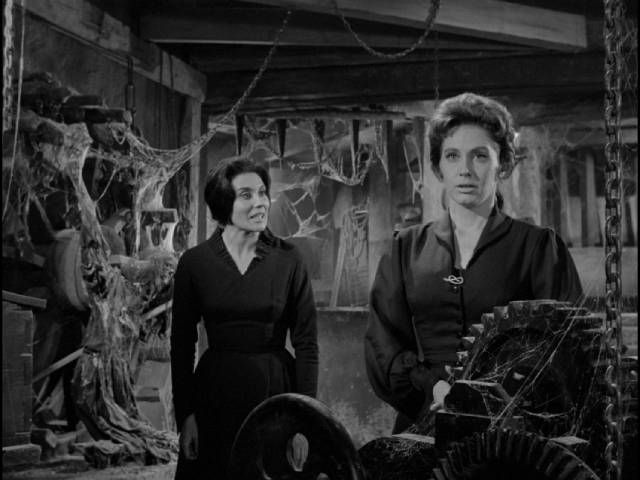
In addition to excellent new transfers, Indicator’s set provides their usual selection of contextual extras, beginning with a commentary on each disk from a different expert on Mexican cinema, plus various interviews about the films’ directors and actors and an archival episode of the Mondo Macabro television series from 2002 about Mexican horror.
There’s also a 100-page book of essays about the films’ production, place in Mexican cinema and distribution. All in all, another superb offering from the best company currently producing movies on disk.
Comments